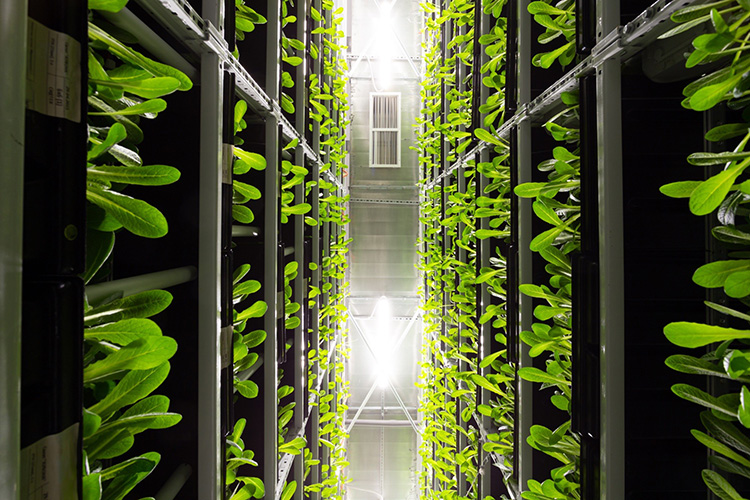Report on the European Parliament’s Position on the Common Agricultural Policy (CAP) Aligned with Sustainable Development Goals
1.0 Financial and Structural Framework for Sustainable Agriculture
The European Parliament has established a definitive position on the future of the Common Agricultural Policy (CAP), emphasizing its financial autonomy and strategic focus. The report, adopted by a vote of 393 to 145 with 123 abstentions, outlines a framework designed to support key Sustainable Development Goals (SDGs).
- Financial Independence: The Parliament mandates that the CAP must not be integrated with other funding areas or national financial envelopes. This ensures dedicated resources for agriculture, directly supporting SDG 2 (Zero Hunger) by safeguarding food production.
- Direct Income Support: A central recommendation is the continuation of direct income support for all active, professional farmers. This measure is critical for:
- SDG 1 (No Poverty): Providing a stable income backbone for farming communities.
- SDG 8 (Decent Work and Economic Growth): Sustaining the economic viability of farms and rural employment.
- Rural Development: Support for rural development must remain independent of cohesion policies, fostering vibrant rural communities in line with SDG 11 (Sustainable Cities and Communities).
2.0 Policy Simplification and Environmental Incentives
A primary guiding principle for the future CAP is the reduction of administrative burdens on farmers, coupled with an incentive-based approach to promote environmental and social sustainability.
- Incentive-Based Eco-Schemes: The Parliament advocates for a system that encourages farmers to achieve environmental objectives. To ensure broad participation, eco-schemes must remain voluntary and be accompanied by fair remuneration. This directly contributes to:
- SDG 13 (Climate Action): Encouraging practices that mitigate climate change.
- SDG 15 (Life on Land): Promoting biodiversity and sustainable land management.
- Good Agricultural and Environmental Condition (GAEC): MEPs stress that existing sustainable farming practices should be recognized when assessing compliance with GAEC requirements, aligning with SDG 12 (Responsible Consumption and Production).
3.0 Digital Transformation for Sustainable Agriculture
The report underscores the necessity of leveraging technology to enhance sustainability, efficiency, and farmer welfare.
- Access to Innovation: All farmers must have access to digital solutions that support sustainable practices, boost income, and reduce administrative workloads, advancing SDG 9 (Industry, Innovation and Infrastructure).
- Modernised Monitoring: To reduce the stress of farm inspections, the monitoring of CAP funds should transition to a centralised electronic system based on satellite imagery and self-certification.
4.0 Water Management and the Circular Economy
To ensure long-term food security and environmental health, the Parliament calls for significant investment in resource management.
- Water Infrastructure: Investments are required to modernise water retention, distribution, and storage infrastructure, as well as wastewater treatment. This is crucial for achieving SDG 6 (Clean Water and Sanitation).
- Circular Economy Incentives: Farmers should be offered incentives for the recovery of biomass, agricultural waste, and co-products. This promotes a circular economy model in agriculture, supporting SDG 7 (Affordable and Clean Energy) and SDG 12 (Responsible Consumption and Production).
5.0 Generational Renewal for Future Food Security
Addressing the demographic challenge in EU agriculture is identified as essential for the sector’s future viability.
- Demographic Imbalance: With nearly 58% of EU farmers over 55 and only 6% under 35, targeted action is urgently needed.
- Supporting Young Farmers: MEPs call for increased CAP financing, alongside tax and loan incentives, to remove barriers for new entrants. This strategy supports:
- SDG 8 (Decent Work and Economic Growth): Creating viable career paths in a critical sector.
- SDG 10 (Reduced Inequalities): Providing opportunities for young people to enter the farming profession.
Analysis of Sustainable Development Goals in the Article
1. Which SDGs are addressed or connected to the issues highlighted in the article?
The article on the EU’s Common Agricultural Policy (CAP) addresses and connects to several Sustainable Development Goals (SDGs) by focusing on agricultural sustainability, economic viability for farmers, environmental protection, and innovation. The following SDGs are relevant:
- SDG 2: Zero Hunger – Directly addresses food security, farmer income, and sustainable agriculture.
- SDG 6: Clean Water and Sanitation – Discusses the need for improved water management and infrastructure in agriculture.
- SDG 8: Decent Work and Economic Growth – Relates to the economic viability of farming, generational renewal, and the vitality of rural communities.
- SDG 9: Industry, Innovation and Infrastructure – Highlights the importance of digitalization, innovative solutions, and modern infrastructure for the agricultural sector.
- SDG 12: Responsible Consumption and Production – Touches upon the circular economy by promoting the recovery of agricultural waste.
- SDG 15: Life on Land – Connects to the environmental aspects of farming, specifically maintaining land in good condition.
2. What specific targets under those SDGs can be identified based on the article’s content?
Based on the article’s content, several specific SDG targets can be identified:
- SDG 2: Zero Hunger
- Target 2.3: “By 2030, double the agricultural productivity and incomes of small-scale food producers…” The article’s emphasis on providing “Direct income support” to all active farmers and using digital solutions to “boost their income” directly aligns with this target. The rapporteur’s quote reinforces this by stating direct payments are the “backbone of their income.”
- Target 2.4: “By 2030, ensure sustainable food production systems and implement resilient agricultural practices…” The article supports this by advocating for an “incentive-based system to encourage farmers to achieve environmental and social objectives” and promoting “innovative and digital solutions that support sustainable agriculture.”
- SDG 6: Clean Water and Sanitation
- Target 6.4: “By 2030, substantially increase water-use efficiency across all sectors…” The article calls for “investments in the modernisation and development of water retention, distribution, and storage infrastructure,” which is essential for increasing water-use efficiency in agriculture.
- SDG 8: Decent Work and Economic Growth
- Target 8.2: “Achieve higher levels of economic productivity through… technological upgrading and innovation…” The push for “Digitalisation of agriculture” so that “All farmers must have access to innovative and digital solutions” is a clear link to this target.
- Target 8.5: “By 2030, achieve full and productive employment and decent work for all…” The focus on “Generational renewal” by increasing financing and incentives to “remove barriers to becoming a farmer” aims to ensure the future of productive employment in the EU’s agricultural sector.
- SDG 9: Industry, Innovation and Infrastructure
- Target 9.1: “Develop quality, reliable, sustainable and resilient infrastructure…” The article’s demand for “investments in the modernisation and development of water retention, distribution, and storage infrastructure” directly contributes to this target.
- SDG 12: Responsible Consumption and Production
- Target 12.5: “By 2030, substantially reduce waste generation through prevention, reduction, recycling and reuse.” This is addressed by the proposal that “Farmers should be also offered incentives for the recovery of biomass, agricultural waste and co-products,” promoting a circular economy in agriculture.
- SDG 15: Life on Land
- Target 15.3: “By 2030, combat desertification, restore degraded land and soil…” The article connects to this by mentioning the requirement for farmers “to comply with requirements to maintain land in good agricultural and environmental condition (GAEC).”
3. Are there any indicators mentioned or implied in the article that can be used to measure progress towards the identified targets?
The article mentions or implies several indicators that can be used to measure progress:
- For SDG 2 (Zero Hunger):
- Indicator for Target 2.3: Farmer income levels. The article’s focus on “direct income support” and solutions to “boost their income” implies that the level and stability of farmer income is a key metric for success.
- For SDG 8 (Decent Work and Economic Growth):
- Indicator for Target 8.5: Age distribution of farmers. The article provides specific baseline data that can be used as an indicator: “almost 58% of farmers in the EU are over 55 and only 6% under 35.” Progress on generational renewal could be measured by an increase in the percentage of farmers under 35.
- For SDG 9 (Industry, Innovation and Infrastructure):
- Indicator for Target 9.1: Level of investment in water infrastructure. The call for “investments in the modernisation and development of water retention, distribution, and storage infrastructure” suggests that the amount of funds allocated and the number of projects completed would be a direct indicator of progress.
- For SDG 12 (Responsible Consumption and Production):
- Indicator for Target 12.5: Amount of agricultural waste recovered. The proposal to offer “incentives for the recovery of biomass, agricultural waste and co-products” implies that the volume of these materials recovered and reused would be a relevant indicator.
- For SDG 15 (Life on Land):
- Indicator for Target 15.3: Area of land under GAEC compliance. The reference to farmers being “required to comply with requirements to maintain land in good agricultural and environmental condition (GAEC)” suggests that the total acreage meeting these standards is a key performance indicator.
4. Summary Table of SDGs, Targets, and Indicators
| SDGs | Targets | Indicators |
|---|---|---|
| SDG 2: Zero Hunger | 2.3: Double agricultural productivity and incomes of small-scale food producers. 2.4: Ensure sustainable food production systems. |
Farmer income levels (implied by focus on direct income support). Number of farmers participating in voluntary eco-schemes (implied). |
| SDG 6: Clean Water and Sanitation | 6.4: Substantially increase water-use efficiency. | Level of investment in water retention, distribution, and storage infrastructure (mentioned). |
| SDG 8: Decent Work and Economic Growth | 8.2: Achieve higher levels of economic productivity through innovation. 8.5: Achieve full and productive employment. |
Rate of adoption of digital solutions by farmers (implied). Percentage of farmers under 35 (mentioned as 6%). |
| SDG 9: Industry, Innovation and Infrastructure | 9.1: Develop quality, reliable, sustainable and resilient infrastructure. | Investment in modernization of water infrastructure (mentioned). |
| SDG 12: Responsible Consumption and Production | 12.5: Substantially reduce waste generation. | Amount of biomass and agricultural waste recovered (implied by incentives). |
| SDG 15: Life on Land | 15.3: Combat desertification and restore degraded land. | Area of land maintained in good agricultural and environmental condition (GAEC) (implied). |
Source: europarl.europa.eu







